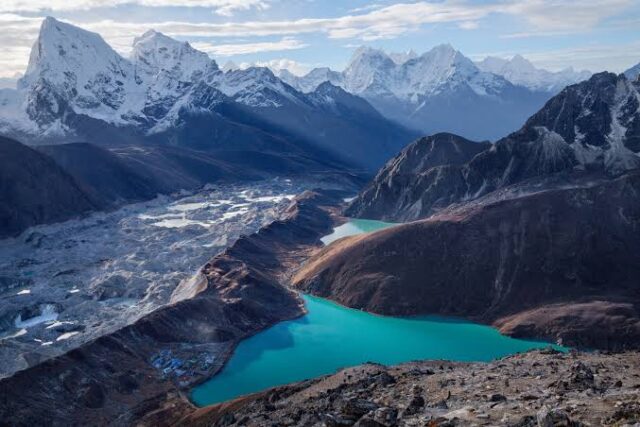Glaciers across Hindu Kush range are melting at an unmatched rate due to the green house emissions. Glaciers could lose 80% of their volume this century if global warming isn’t controlled, according to a report.
Kathmandu based International Centre for Integrated Mountain Development in a report on Tuesday warned that flash floods and avalanches would grow more likely in coming years, and that the availability of fresh water could be retrenched for nearly 2 billion people who live downstream of 12 rivers that originate in the mountains.
Ice and snow present in Hindu Kush Himalayan range are an important source of water for rivers flow through 16 countries in Asia and provide fresh water to some 240 million people in the mountains and another 1.65 billion downstream.
“The people living in these mountains who have contributed next to nothing to global warming are at high risk due to climate change,” said Amina Maharjan, a migration specialist and one of the report’s authors. “Current adaptation efforts are wholly insufficient, and we are extremely concerned that without greater support, these communities will be unable to cope.”
Few previous studies and reports have indicated that cryosphere (region on earth covered by ice and snow) are among the worst effected by global warming. Another recent report found out that glaciers at mount Everest have lost 2,000 years of ice in just the past 30 years.
Key findings from Tuesday reports include that Himalayan glaciers vanished 65% faster since 2010 than in the previous decade, and that reducing snow cover due to global warming will result in reduced fresh water for people living downstream. The study also found that 200 glacier lakes across Hindu Kush Himalayan range are considered dangerous, and the region could see a significant increase in glacial lake outburst floods by the end of the century.
The communities in mountain ranges are affected by climate change far more then any other part of the world. A recent example of this was earlier this year when the Indian mountain town of Joshimath began sinking and residents had to be relocated within days.
Pam Pearson, director of the International Cryosphere Climate Initiative said “Once ice melts in these regions, it’s very difficult to put it back to its frozen form.” According to Pearson it is of utmost importance for Earth’s snow and permafrost that the global warming should limit to 1.5 degree Celsius agreed to at the 2015 Paris climate conference.












